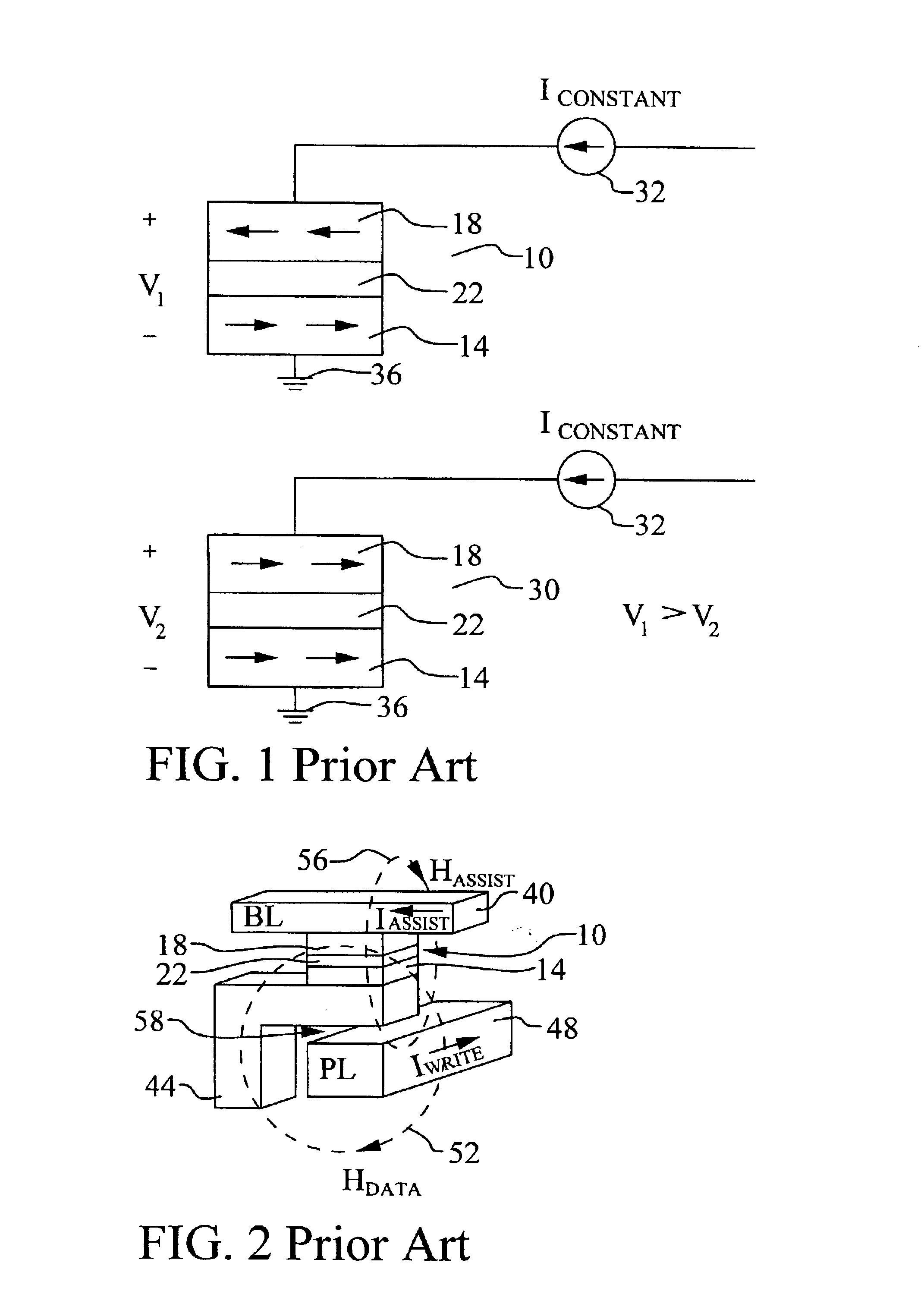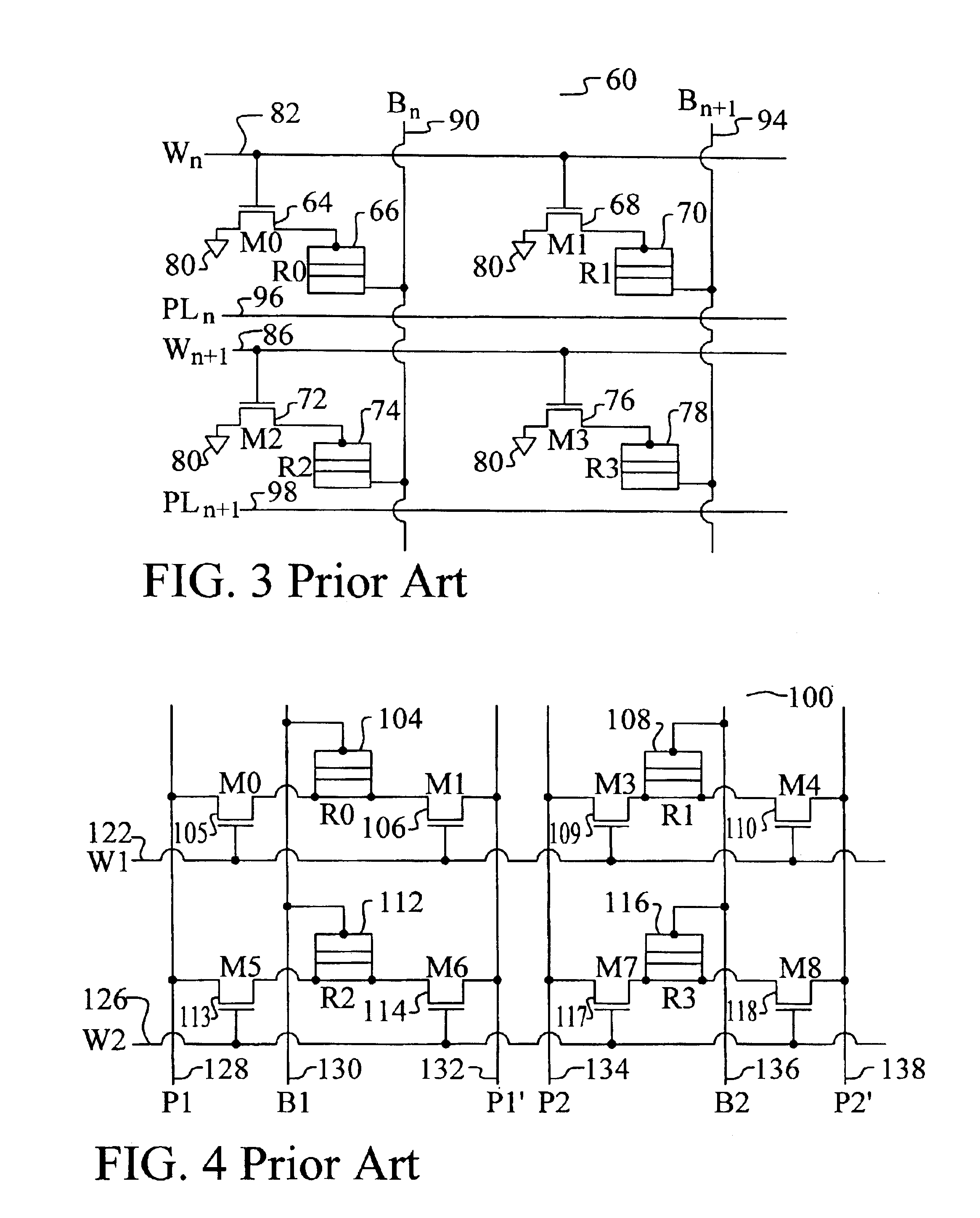Magnetic RAM cell device and array architecture
a technology of array architecture and magnetic ram, which is applied in the field of magnetic ram devices based on magnetic tunnel junction cells, can solve the problems of loss of data or change of switching threshold, significant disadvantage of adding a transistor to each cell, and the requirement for relatively large transistors
- Summary
- Abstract
- Description
- Claims
- Application Information
AI Technical Summary
Benefits of technology
Problems solved by technology
Method used
Image
Examples
first embodiment
[0041]Referring now to FIG. 5b, a second preferred embodiment of the MTJ cell group is illustrated. In this case, only the free layer 160 and second conductor layer 170 are unique to each cell 181, 182, and 183. The remaining layers, including the dielectric layer 158, and the common conductive layer 165, comprising the pinned layer 154, the anti-ferromagnetic layer 168, and the first conductive layer 164, are conformally formed and not patterned to the individual MTJ cells 181, 182, and 183. In practice, however, it is difficult to stop the free layer 158 etch on the tunnel oxide of the dielectric layer 158 or on the pinned layer 154. Therefore, the method wherein only the common conductive layer 164 extends across the sub-array, as shown in FIG. 5a, is easier to manufacture.
[0042]Referring now to FIG. 6a, a first preferred embodiment of a MRAM array 200 of the present invention is illustrated in a schematic form. The array 200 uses the unique MRAM sub-array comprising, in this exa...
second embodiment
[0047]Referring now to FIG. 6c, and alternative form of the second embodiment MRAM array 240 of the present invention is illustrated in a schematic form. In this case, the gates of the transistors 241, 242, and 243 are connected to a gate select signal G1245 and G2246. This gate select line preferably comprises switches SW3247 and SW4248 so that only the local set of cells R1-R3, is selected. Referring now to FIG. 7, the sub-array 250 is illustrated in a top view. In this view, the common conductive layer 260 underlies each MTJ cell 262 from left to right. The data lines, or bit lines 254, 256, and 258, overlie each cell MTJ cell 262 from top to bottom. To write a cell in the sub-array, a program current IASSIST flows in the common conductive layer 260 from the program line PL to ground GND. Note that the longitudinal axis of each MTJ cell 262 is in the same direction as the direction of the common conductive layer 260. The program current, IASSIST, generates a magnetic field, HASSI...
PUM
 Login to View More
Login to View More Abstract
Description
Claims
Application Information
 Login to View More
Login to View More - R&D
- Intellectual Property
- Life Sciences
- Materials
- Tech Scout
- Unparalleled Data Quality
- Higher Quality Content
- 60% Fewer Hallucinations
Browse by: Latest US Patents, China's latest patents, Technical Efficacy Thesaurus, Application Domain, Technology Topic, Popular Technical Reports.
© 2025 PatSnap. All rights reserved.Legal|Privacy policy|Modern Slavery Act Transparency Statement|Sitemap|About US| Contact US: help@patsnap.com



